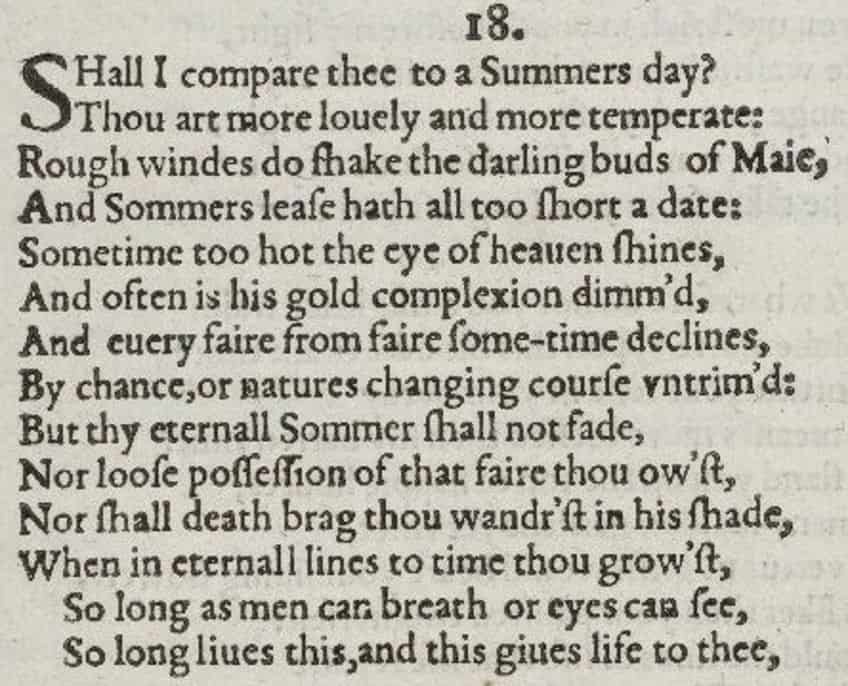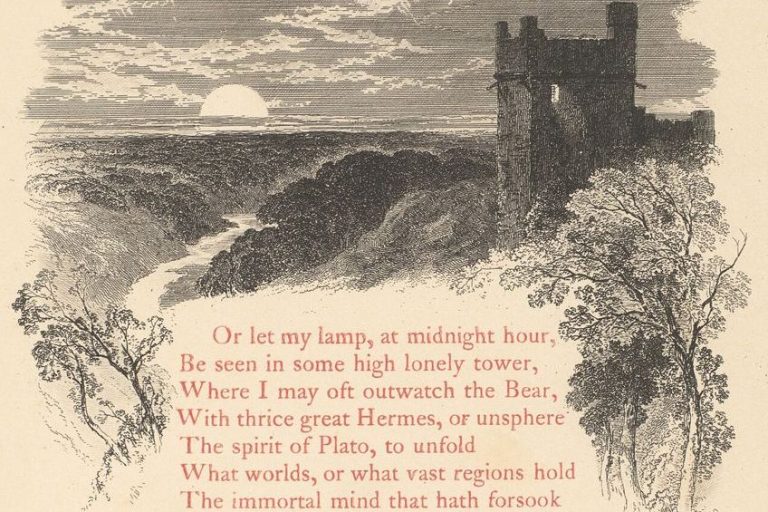Rhyme in Poetry – Basic and Complex Schemes to Know
We often associate poetry with rhyme, and rhyme in poetry has a long history because of it. Today, we will give a definition of rhyme in poetry, while also discussing different types of rhyme, such as basic and complex rhyme schemes. Some of these will also be supplemented with an example of rhyme in poetry to show how they can be used. If this sounds like it’s right up your alley, let’s have a look at rhyme in poetry!
A Look at Rhyme in Poetry
So, what is a rhyming poem? That is what we are going to examine today. We are going to examine a few different elements of rhyme in poetry. However, before we do that, what is a good definition of rhyme in poetry? In a basic sense, rhyme is the use of words that have a similar phonetic structure to one another. Essentially, words that sound alike. When we want to rhyme on time we may need a dime or two. That was three rhymes in a row: rhyme, time, and dime.

However, this is a very simple way to look at rhyme. Rhyme can also be more internal and slanted, such as something that looks like it rhymes but doesn’t entirely rhyme, or something that only partially rhymes. We are going to look at each of these instances of rhyme in poetry in this article below. So, let’s get started and see what we can learn.
Types of Rhyme
There are many different examples of rhyme in poetry, but we need to start with the basics. So, before we look at some of the rhyme schemes that could occur, including both simple and complex varieties of rhyme schemes, we first need to look at rhyme itself. How can rhyme be laid out in a line?
There are quite a number of different ways, but today, we will only examine five of the most common ways in which rhyme in poetry can be used.
End Rhyme
This type of rhyme in poetry is when the rhyming word is sent to the end of a line. Poetry is generally arranged around a series of lengthier lines, and when that line concludes with some kind of a sound that is then repetitively used again later at the end of a different rhyme, it is an instance of end rhyme.

End rhyme is definitely the most famous and commonly seen variety of rhyme. The reason for this is because the human ear tends to best hear a rhyme when it is situated at the end of a line. We naturally read something with a certain emphasis on what lies at the end, and so those rhymes found at the end of a line are the best for more typical poetry.
Internal Rhyme
This type of rhyme in poetry involves the use of rhyme within a line. This can mean that there is the use of multiple words within a single line that rhyme with one another, but it can also refer to rhymes on other lines that can be found internally. These rhymes are often harder to hear when they take place across lines, but when found within a single line, they can stand out even more than end rhyme. Internal rhyme is not quite as common as end rhyme, and so one is less likely to see rhyme of this variety. However, it does lend a kind of musicality to poetry that can make it have a far more pronounced and appealing rhythm.
This form is also often mixed with other forms of rhyme as end rhyme is still more prominent as a type of rhyme in poetry.
Slant Rhyme
This type of rhyme in poetry is quite interesting because it technically isn’t rhyme. Rhyme entails the use of a repetition of sounds that are similar to one another. Whereas slant rhyme entails the use of words that don’t quite rhyme with one another, but they are very similar. They are not identical but may sound similar. For instance, look at words like “milk” and “walk”. When read quickly, they can sound similar to one another, but they are not the same.

Slant rhyme is not as common as end rhyme, but it is quite prominently used in free verse poetry where the typical rules of poetry do not often apply all that much. The use of slant rhyme also allows for a looser and less constrained form of rhyming techniques. This form of rhyme may not be as prominent as some of the others, but it has been used in many famous poems.
Identical Rhyme
This type of rhyme in poetry can often be seen as lazy by some people because it literally means the repetitive use of the same word multiple times over. This means that it is not rhyming similar sounds, but the exact same sound. However, this is not necessarily a lazy method, as the repetition of a single word can aid in reinforcing certain thematic aspects of a poem. Identical rhyme is an interesting one and also one that some may not consider to be a type of rhyme at all, but if a word is rhymed with itself, that is still, strictly speaking, an instance of rhyme.
It may appear somewhat strange, but that does not mean that it cannot and has not been extensively used.
Eye Rhyme
This type of rhyme in poetry may be seen as somewhat similar to slant rhyme as it does not actually entail real rhyme. Instead, this is the use of words that look the same as one another but are pronounced differently. This makes it a kind of textual rather than phonetic rhyme. For instance, to “lead” someone somewhere does not use the same pronunciation as the metal known as “lead”.

Eye rhyme is interesting because it can make a poem read as if it has better flow while not actually necessarily having better flow. It is the illusion of rhyme that does not work in the same way when said poem is read aloud. It should also be noted that while homonyms were used above, eye rhyme does not require that the words be spelled the same, but simply look the same, such as the metal “lead” and the activity to “read”. These are also a kind of eye rhyme.
Common Basic Rhyme Schemes
There are many different types of rhyme schemes, and some of them are quite complex and specific. However, a very basic arrangement of rhyme layouts can be termed a form of simple rhyme scheme. So, before we examine some of the more complex forms of rhyme scheme.
Let’s interrogate and inspect a few of the simple forms on which larger and more complex forms are often based.
Alternate Rhyme
This type of rhyme sequence is very common in many types of poetry, and it involves the use of one line followed by another that does not rhyme with the first, but the first line rhymes with the third and the second with the fourth. This is easiest to show with the common structure of ABAB. This can be found in many different types of poems.

The alternate rhyme scheme often forms part of larger and more complex rhyme schemes. For instance, it can be found in the Shakespearean sonnet. This basic structure, when used more repetitively, works well in the English language as a means of producing a certain kind of rhythmic rhyming sequence.
Coupled Rhyme
This type of rhyme sequence is very basic as it involves two lines that rhyme with one another. This could be shown with a rhyme scheme layout such as AABBCC, and so on. These kinds of rhymes are often paired with one another, and it is not uncommon for non-traditional poems to make use of a rhyme scheme like this throughout the duration of the poem. Coupled rhymes are also often used within larger types of rhyme schemes. This particular variety of rhyme is likely best known for capping off the end of the Shakespearean sonnet. It makes up the final two lines of that poetic structure.
This basic rhyme scheme is pleasing to the ear because of the close distance between the rhyming segments.
Enclosed Rhyme
This type of rhyme sequence is one of the most common varieties, but it can feel somewhat strange to the ear as it sounds somewhat like a combination of alternate rhyme and coupled rhyme. This is the type of rhyme that makes use of a line followed by two coupled rhymes and ends off with a line that rhymes with the first line. This is best shown through the structure of ABBA.
Enclosed rhyme works better in some languages than in others. For this reason, it is a common type of rhyme that can be found in the Petrarchan sonnet structure. This structure has its origins in the Italian language, and this kind of rhyming arrangement is considered to be more pronounced in that language rather than in English.
Triplet Rhyme
This type of rhyme sequence is similar to a monorhyme but is more specific in the number of lines. It involves a tercet, or a three-line stanza, but every line has the same rhyme. This makes it a rhyme sequence that is arranged as AAA, BBB, and so on.
Similar to the above, the use of three rhymes in a row produces a pleasant and flowing sound, but it is not a very common form of rhyme in poetry.
Monorhyme
This type of rhyme sequence is not seen all that often, but it can often have a gimmicky purpose. This type of rhyme in poetry involves the use of a stanza or poem in which every line has the same rhyme. So, instead of being an ABAB or an ABBA, it is instead AAAAA. Think of a poem that has lines that end with words such as cat, bat, fat, hat, and rat.

The extreme use of rhyme does lead to a very entertaining overall sound to the poem, but most forms of poetry do not use rhyme to this extent. The monorhyme structure can be particularly great for light-hearted or children-focused poetry. It has a pleasant and flowing sound to it, and this can often be a means of aiding children in remembering stories. Constant and overwhelming rhyme is entertaining to hear, and who doesn’t want to hear a lot of that?
Common Complex Rhyme Schemes
Now that we have examined some of the simpler and less complex types of rhyme sequences that can be used, let’s have a look at how they can be used in a lengthier capacity. We will now look at five different examples of a far more complex type of rhyme scheme.
These are the rhyme schemes that people usually think of when they use the word “rhyme scheme”, so let’s see what they are and what sets them apart from one another.
Shakespearean Sonnet
This type of poem has one of the most famous rhyme schemes in the English language. This rhyme scheme is arranged as ABABCDCDEFEFGG. This involves the use of four quatrains that adopt alternating rhyme, and the whole poem ultimately ends with an example of coupled rhyme.

This particular type of poem is one of the most famous in the English language because it was extensively used by William Shakespeare in a number of poems, such as My mistresses’ eyes are nothing like the sun and Shall I compare thee to a summer’s day? When it comes to rhyme in poetry, there are few as well-known as this variety.
Petrarchan Sonnet
While the Shakespearean sonnet is more famous in the English language, this type of poem is more famous in Italian. There are instances of its use in English, but they are not as common. This particular poem makes use of an ABBAABBACDECDE rhyme scheme. This is a combination of two enclosed rhyme quatrains and two alternating rhyme tercets. There are a number of famous poems that have made use of this structure, such as the many notable poems of the man after whom they are named, Petrarch.
This form may not be as famous in English, but it has still had a profound influence on poetry through the ages and is one of the best-known examples of a rhyme scheme in the world.
Limerick
This type of poem has a specific rhyme scheme and number of lines. It is a short type of poem at only five lines in length, but the thing that distinguishes it is its use of a specific rhyme scheme. That rhyme scheme is written as AABBA. This essentially involves two coupled rhymes with a final alternate style rhyme at the end where the fifth line rhymes with the first and second lines.

The limerick is an old type of poem, but when compared to some of the other famous varieties of poetry, it is quite young. It is best known for being used in a joke. Many limericks are either aimed at children, as the rhyme scheme is conducive to a silly structure, but many limericks are also noted for being very dirty. They are a kind of rhyming joke and their short structure and repetitive rhyme scheme help with this common use.
Villanelle
This type of poem has a specific number of lines with a very specific form. It requires the use of 19 lines, and those lines need to be arranged in five tercets, or three-line stanzas, and each of those tercets uses an ABA rhyme scheme. However, this only adds up to 18 lines, and that is because the final part of the poem includes an extra line with a similar, but added rhyme scheme, of ABAA. This is not the whole story though, because the villanelle has another very specific aspect.
While we have discussed the rhyme scheme of the villanelle, it also has a highly repetitive form that contributes to the way in which it is structured.
In addition to the rhyme, the first and third lines of the first stanza are repeated as refrains through the course of the poem. There is no variation in these lines when they are repeated. They are repeated verbatim. The exact repetition of whole lines does not mean that those repeated lines could be seen as a type of rhyme, but they do ultimately contribute to the rhyme scheme. Those repeated lines are repeated in that arrangement because they are meant to be impactful, in some way, to the overall message of the poem.
Sestina
This type of poem has a very specific rhyme scheme. This rhyme scheme necessitates a certain number of lines too. In the case of this particular type of rhyme scheme/poetry type, there needs to be an arrangement of six stanzas, and they are arranged in a kind of repetitious identical rhyme structure. This variety is also quite complex and is arranged according to a mathematical sequence.
The sestina involves the end word of each line being used in a different order in each subsequent stanza. So, the end word of the first line is repeated at the end of the second line in the second stanza. Each word shifts into a different place with each subsequent stanza according to a prearranged order. It is a complex form that is not very common and can be quite difficult to produce.

It does not sound as if it has a rhyme, and in the traditional sense, it does not rhyme. However, the use of the exact same words in a repeated sequence means that this can be seen as a form of identical rhyme that is replicated multiple times over. A good example of a sestina is A Miracle for Breakfast (1972) by Elizabeth Bishop.
With this final example of rhyme in poetry, we are at our conclusion. We have looked at rhyme in poetry and answered the question: “What is a rhyming poem?”. We have done this by examining a variety of types of poems, including more complex rhyme schemes. There are many different ways to look at rhyme in poetry, and hopefully, this has been a good overview of this common poetic element.
Frequently Asked Questions
What Is Rhyme?
Rhyme is a form of repetition that is commonly associated with poetry, but can be found in ordinary language too. This particular form of repetition entails the repetition of sounds that are alike. We often associate rhyme with end rhyme in a poem, in which the last word of a line rhymes with some other final word in a different line. This aspect of speech is quite common, and humans have used it for a very long time to create more descriptive and flowery speech.
What Is a Rhyming Poem?
A rhyming poem is simply a poem that makes use of rhyme. An example of rhyme in poetry can be found in a number of different types of poems. For instance, traditional sonnets make use of a specific rhyme scheme that is particular to that type of sonnet. However, there are many varieties of poems that use rhyme, and many do not do so in a formal capacity, such as with sonnets. When it comes to a definition of rhyme in poetry, we often associate rhyme with poems even though there are many poems that do not make use of any rhyme.
How Many Types of Rhyme Are There?
There are many different types of rhyme that can be used. Some of the most common include end rhymes, internal rhymes, and slant rhymes. However, there are many other forms. In addition to this, there are many types of rhyme schemes that can also be considered a type of rhyme in this sense, such as the specific rhyme scheme used in a Shakespearean sonnet or a limerick.
Do Poems Require Rhyme?
Poetry does not require rhyme. While there are some types of poetry that do require rhyme, such as if one were to write a Shakespearean sonnet, but this is not a hard rule in all poetry. In fact, free verse poetry is a type of poetry that is noted for its lack of a specific rhyme scheme. This does not mean they do not use rhyme at all, as many words do rhyme with one another, but rather that they do not have to rhyme.
What Is the Most Common Rhyme Scheme?
There are many different rhyme schemes, and it is likely impossible to determine the type of rhyme scheme that is the most common. In the English language, the Shakespearean sonnet is likely the most famous rhyme scheme, but that does not make it the most common. The use of coupled rhymes and alternate rhymes are probably among the most common of all the simple types of rhyme schemes.
Justin van Huyssteen is a freelance writer, novelist, and academic originally from Cape Town, South Africa. At present, he has a bachelor’s degree in English and literary theory and an honor’s degree in literary theory. He is currently working towards his master’s degree in literary theory with a focus on animal studies, critical theory, and semiotics within literature. As a novelist and freelancer, he often writes under the pen name L.C. Lupus.
Justin’s preferred literary movements include modern and postmodern literature with literary fiction and genre fiction like sci-fi, post-apocalyptic, and horror being of particular interest. His academia extends to his interest in prose and narratology. He enjoys analyzing a variety of mediums through a literary lens, such as graphic novels, film, and video games.
Justin is working for artincontext.org as an author and content writer since 2022. He is responsible for all blog posts about architecture, literature and poetry.
Learn more about Justin van Huyssteen and the Art in Context Team.
Cite this Article
Justin, van Huyssteen, “Rhyme in Poetry – Basic and Complex Schemes to Know.” Art in Context. November 24, 2023. URL: https://artincontext.org/rhyme-in-poetry/
van Huyssteen, J. (2023, 24 November). Rhyme in Poetry – Basic and Complex Schemes to Know. Art in Context. https://artincontext.org/rhyme-in-poetry/
van Huyssteen, Justin. “Rhyme in Poetry – Basic and Complex Schemes to Know.” Art in Context, November 24, 2023. https://artincontext.org/rhyme-in-poetry/.









